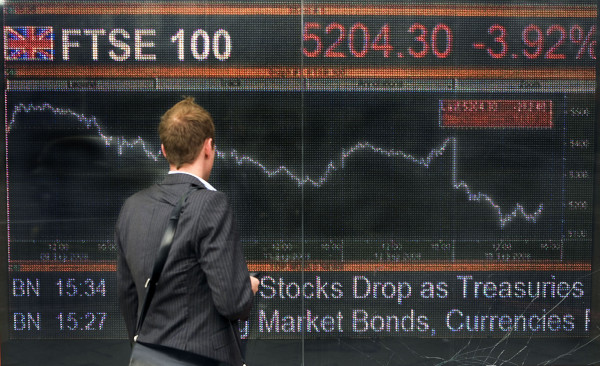

Advisers told FTAdviser they have not needed to change the drawdown advice they gave to clients as some had already factored in bigger losses than actually transpired.
Darren Cooke, chartered financial planner at Red Circle Financial Planning, suggested that his clients reduce the amount of income they take from their funds in the short term to reduce pressure on the portfolio, but on the whole was happy with the way his clients’ funds were performing.
Although portfolios have dropped in value following market falls, the amount they had fallen by was within the perimeters of what the drawdown plan allows, according to Mr Cooke.
He said: “Portfolios have fallen but we stress test all portfolios against market volatility, and the falls clients have experienced have been well within the tolerances we allow so far.
“I test against real market returns over the last 30 years so that factors-in the 2000-2002 crash and the 2008-10 crash along with a few other down years along the way.
“We have allowed for a one-year drop of up to 16.5 per cent (depending on risk profile), and no client portfolio has breached that so far.”
While the news in recent months has focused on the performance of certain stock market indices, their falls have not reflected those of the average multi-asset portfolio.
For example, the FTSE 100 has lost 14.6 per cent over the past year but, according to FE Analytics, the Investment Association’s Mixed Investment 20-60% Shares sector is only down 2 per cent, while the Mixed Investment 40-85% Shares sector is only down 1.5 per cent.
Over three years these sectors have returned 2 per cent and 5.5 per cent respectively.

But Chris Jones, proposition director at Dynamic Planner, warned volatility would be greater when a portfolio is in decumulation because of pound cost ravaging.
He said: “That fixed amount you’re taking out each month means when they have to sell more units the average unit price you sell at is lower so you lose through volatility, whereas when you’re paying money in you gain through volatility.
“So in decumulation the personal performance is not the unit price at all, and plus there are charges to come off. That’s when it really distorts things.”
Alan Chan, director and chartered financial planner at IFS Wealth and Pensions, has also advised clients to consider a reduced withdrawal level this year to minimise crystallising losses.
Where a client has cash savings available, he urges them to use those instead so the pension pot can be preserved for longer.
But overall he has not had to alter his drawdown advice as it is proving to be robust against market falls.
Mr Chan said: “Most clients’ portfolios are down in recent months, although losses are not as large as that of the markets in general.
“When you have a global pandemic of this scale that’s causing worldwide economies to grind to a halt, no amount of diversification within your portfolio can protect you from this.
“We have not changed our drawdown advice following the Covid-19 crisis as it’s largely down to the individual’s personal circumstances.”
Using hybrid drawdown
William Burrows, retirement director at Better Retirement, said if drawdown was set up correctly in the first place, then “there is nothing to worry about”, but that the real challenge is whether advisers have practised what they preached.
Mr Burrows said advisers had all talked “about the risk of sequence of returns, and my approach has always been to try and have a couple of years’ worth of income in cash or low risk assets to balance this.
“It’s always harder in practice than theory, but the important bit going forward is that advisers need to make sure they build up a significant cash buffer so if this happens again people are not caught out”.
Mr Chan said he often turns to hybrid drawdown solutions, which combine the investment benefits of pension drawdown with an annuity to provide a guaranteed income until death.
He said: “We always consider hybrid drawdown solutions, because we believe annuities still have a role to play to provide some guaranteed income to cover key expenses in retirement. It depends on the clients’ financial plan to achieve their short, medium, and longer-term objectives.”
But Mr Cooke has not yet considered hybrid solutions as he said they do not offer the best outcome and could often be expensive.
Mr Cooke said: “I haven’t considered hybrid solutions and I have no clients with hybrid solutions, so I can’t comment if people in hybrid solutions have fared better or not.
“Generally you end up with the worst of both worlds: a poor annuity and a poor investment option, and initially they were also quite expensive.
“If I wanted to run this for a client I’d set up a self-invested personal pension, buy an annuity through that at best market rates and then run an investment solution through a decent platform with full investment options. It would probably be cheaper as well.”
He added: “I’m not finding any difference in talking to clients about their pensions or drawdown because I’ve already been talking to them about an event in markets happening like this for some time and building that into their plans already.
“They all knew this would happen one day and they all know their plans can withstand it.”
amy.austin@ft.com
What do you think about the issues raised by this story? Email us on fa.letters@ft.com to let us know.



